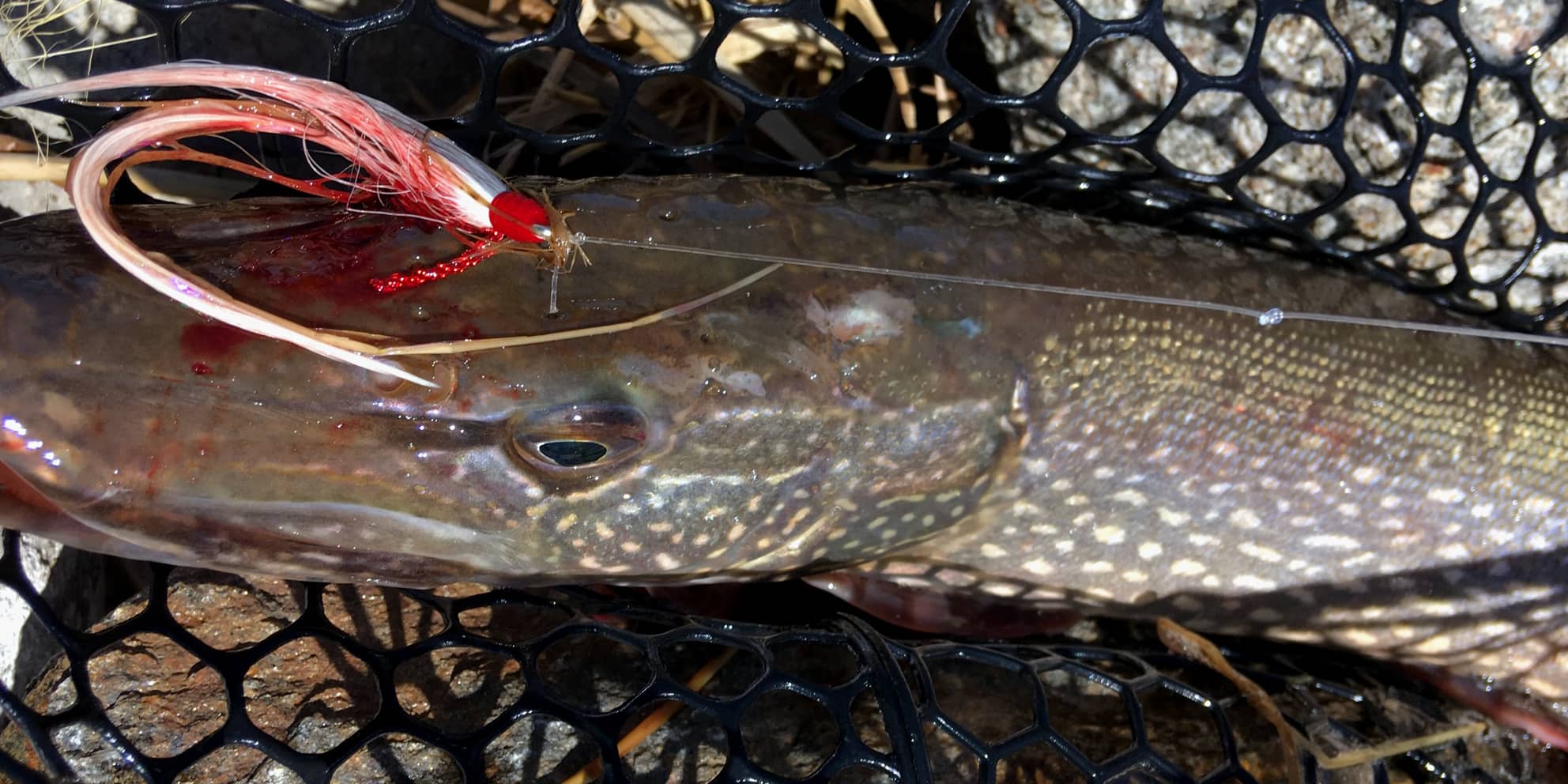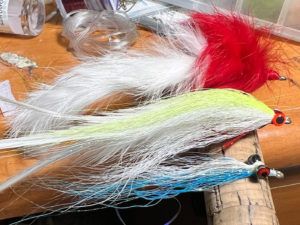
Catching spring pike on the fly is an instantly-rewarding experience and a great way to learn the ins and outs of the fly rod. Simonson Photo.
By Nick Simonson
Like any new adventure in the outdoors, fly fishing takes best when bolstered by early and frequent success. No other species provides more heart-stopping strikes, wrist-jolting runs, and a sense of accomplishment out of the gate for new fly rodders than the northern pike. That early and oft-occurring spring excitement they bring makes them the perfect target for first timers on the fly rod.
It doesn’t take much more than a moderately strong rod and a few flashy flies to get started and get catching fish. What follows is a primer for the region’s premier early season pursuit on the long rod.
A Strong Combo
Most pike can be managed on an eight-weight fly rod, and its relatively stout nature allows for it to pull double duty for smallmouth and largemouth bass when the spring run of northerns tapers off and those species kick into high gear.

While the reel is often the second thought when it comes to a flyfishing combo, one with a reliable drag mechanism is key in managing the run of bigger fish, so investing in a model that’s a level or two up from basic is not a bad idea when it comes to turning bigger fish in spring. If adventures on the long rod are likely to be for pike only, or include muskies as well, consider upping the capacity of the rod and reel to a ten-weight combo.
Line to match the reel is a given and both floating line and sink-tip options will get an offering in front of staging spring northerns. A weight forward, eight-weight floating line (written as WF8F) or weight forward, ten-weight floating line (WF10F) is a good start, with various sinking options providing choices when pike are a bit deeper. Considering though that most spring pike are up in the shallows or staging just off them in tributary creeks and warming bays, a floating line will get the job done.
The weight forward nature of such a line allows even novice casters to get those bigger pike streamers out to where the fish are and turns them over for a natural presentation as soon as they hit the water. When considering a leader to bring it all together, those with a wire shock tippet and a metal clip for attaching flies at the end will prevent bite-offs, are easy to use and typically aren’t too distracting to aggressive springtime pike.
Keep Flies Simple & Flashy
With the rod, reel and line selected, a handful of bright, flashy flies will work for northerns in spring. Remember that these are early-season pike – not scrutinizing bonefish on clear Caribbean flats – and they aren’t terribly picky.
When considering those first flies to buy or craft, think of what pike tend to slam on standard tackle: spoons, big twister tails, large bucktail spinners and the like. None of those standard offerings are especially detailed. None of them look like anything in particular. They simply trigger that reaction strike that spring pike are known for. The same should be considered when picking out flies or crafting them at the vise.
Keep it simple, keep it big and keep it flashy. Favorite flies include simple offerings such as bunny leeches consisting of a tied and wound strip of rabbit fur. Lefty’s deceiver is a bucktail and feather combination that has accounted for more pike on the fly rod than I can now remember. Larger Clouser minnows tied on hooks from 1 to 4/0 are a simple bucktail offering that also gets down in the column. Bright color combinations like red-and-white, orange-and-white and chartreuse-and-white provide great attractor patterns, and a couple darker flies in black or purple for those cloudy spring days are good to have as a backup as well.
While the flies can be extremely detailed and well put together when they hit the water, after a fish or two, most pike streamers start to look the same – long, injured and giving off the appearance of an easy meal. Stick to the rule of five inches or more in length, a fishy form with brighter colors, and relative ease of castability.
Take It To ‘Em
From there, the rest is just pike fishing. Find those channels where northerns run in spring, target feeder creeks and warming bays, hit those dams that block upstream migration, and its likely pike will be there for the plucking. Time it right and the angling can be non-stop and provide incredible practice when it comes to casting and laying into the powerful sideways strip-style hookset that is required to drive a hook into the bony beak of a pike and the rod angle and drag management needed to bring them in.
With a spring of exciting pike fishing on the fly rod, a whole new world of angling is opened, and even the most novice long rodder can record some great memories.
